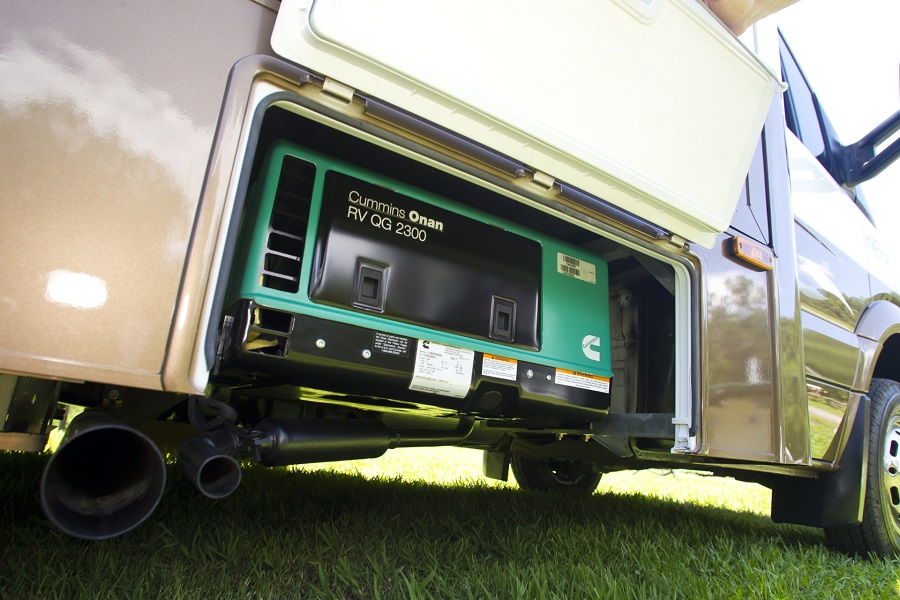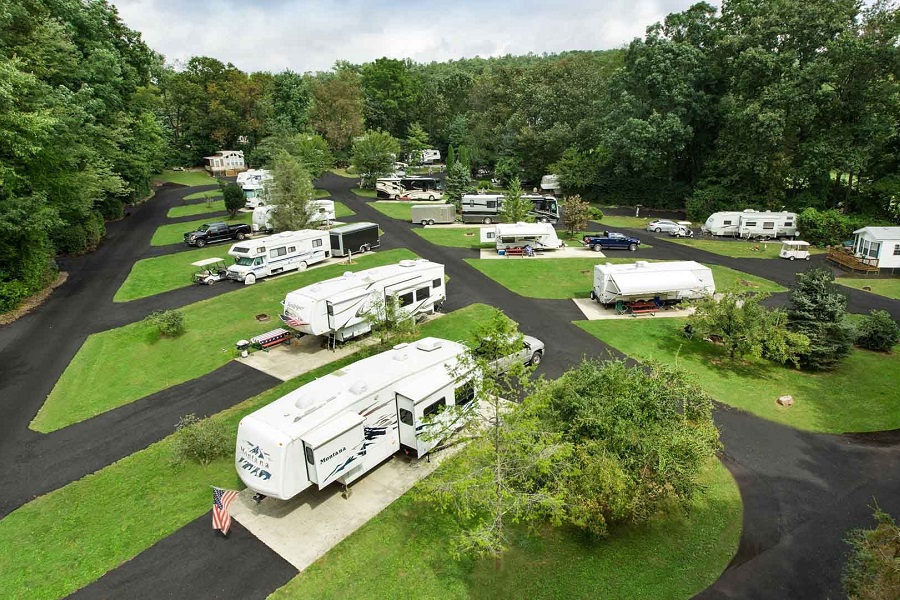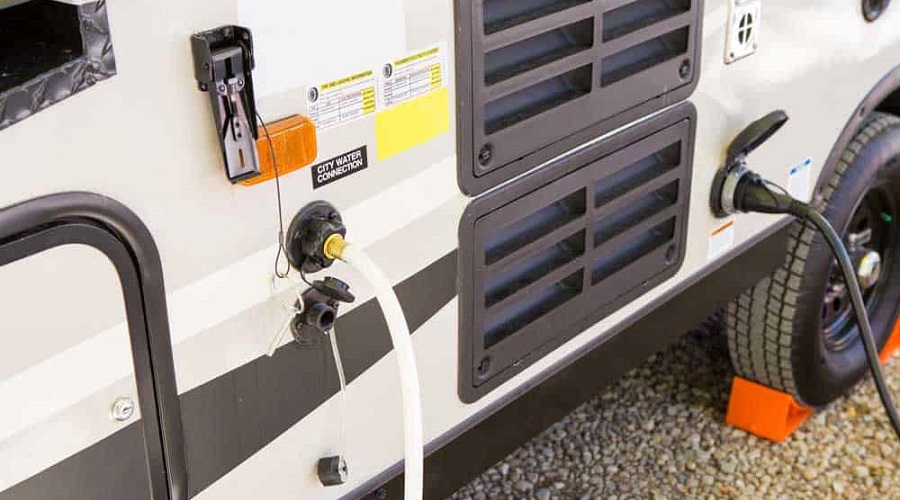If you are familiar with RV life, you may know how it feels to enter a boiling hot camper in the heat of the afternoon.
Or, you may have vivid flashbacks of waking up in the middle of the night too cold even to think. Fortunately, there are ways to remedy this, which is why you are probably here!
Insulating your RV will make your life more comfortable and will keep the camper at a reasonable temperature.
However, if you have not insulated your RV before, the process may be daunting. That is why we will be explaining a few easy ways to improve your RV insulation.
Why Is RV Insulation Important?
RV insulation is very important for maintaining a comfortable living environment.
It is something that you cannot ignore if you are camping in areas with extreme heat or extreme cold. Even then, your camper can still reach uncomfortable temperatures in mild climates.
The reason homes have insulation is that heat flows from warmer to cooler areas until there is no temperature difference.
This means that any heat in your RV during winter will eventually flow outside (to the cooler area), leaving you as a frigid ice cube.
It’s the same idea in the summertime; the heat outside will flow into the cool RV, leaving you feeling like baked shrimp.
Insulating your RV will prevent the heat from flowing in or out of your RV. The insulation works as a protective barrier that will slow down the process of heat transfer.
Not only does insulation increase the comfort level, but it will also save you money. Without proper RV insulation, you will be using a heater or an air conditioning unit more than you should.
Door Insulation
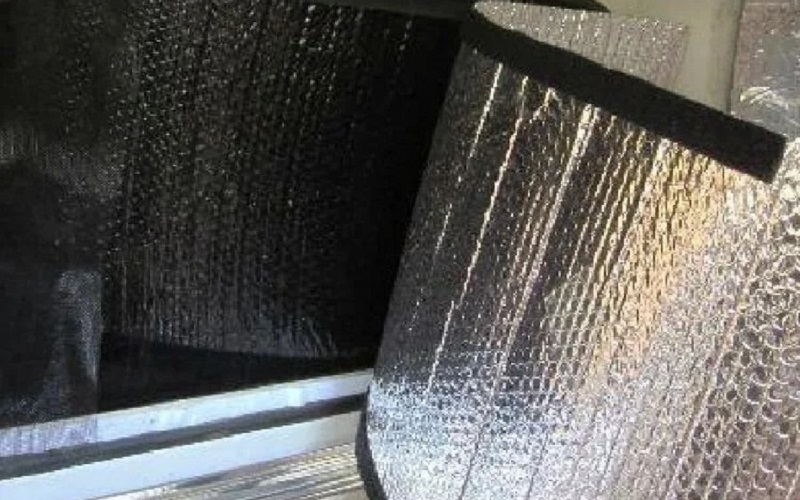
One of the most common ways that hot air can enter or escape your RV is through the doors. There are a few different ways you can improve door insulation.
Replace Old Caulking
If you haven’t replaced the caulking around the doors in a few years, it may be time. Check if the caulking is damaged in any place and replace it to avoid drafts.
Check The Weather Stripping For Cracks
If there are any cracks or holes in the weather stripping, you can be sure air is traveling through it. You should be inspecting the weather stripping yearly or whenever you start to feel a draft.
Install An Energy-Efficient Door
If you haven’t replaced your door in a while, you might want to buy a door with an energy-efficient label. These doors will prevent heat transfer and will help maintain a constant temperature.
Install A Door Snake
These are great for door insulation. The main job of door snakes is to fill the space between the floor to the bottom of the door. Make your own snake or buy one to prevent air from entering or escaping through the crack.
RV Insulation For Windows
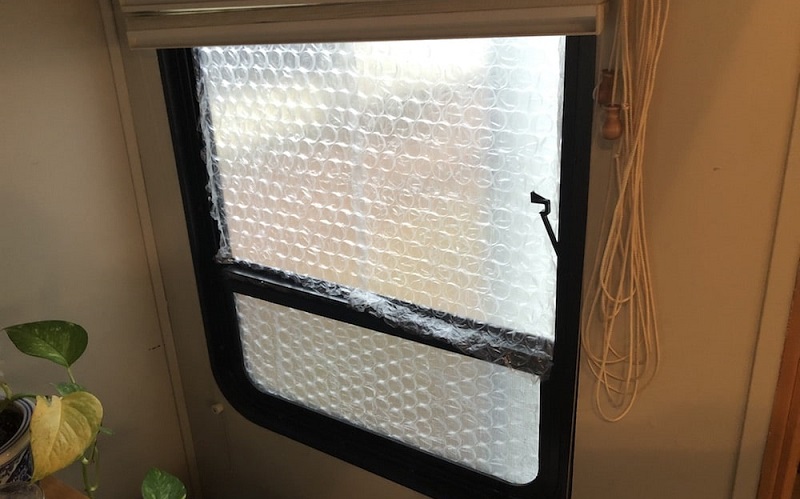
Not only can doors easily transfer heat, but windows are the next major culprit. There are a few ways to improve window insulation for all seasons.
Hang Thermal Curtains On The Windows
Thermal curtains will insulate your windows and keep the heat in. They also block the sunlight if you want to take a nice afternoon nap.
Use Reflective Insulation In The Summer
If you want to take a summer road trip, invest in some reflective insulation. These can go right on your windows and will block the heat of the sun from roasting your camper.
Use A Plastic insulating Film On Your wWindows
Many campers use plastic film as window insulation in the summer.
Check The Caulking And Weather Stripping For Cracks
You will also have to check the seals on the windows to make sure there are no openings. Replace any damaged caulking or weather stripping to improve insulation.
RV Insulation For Walls
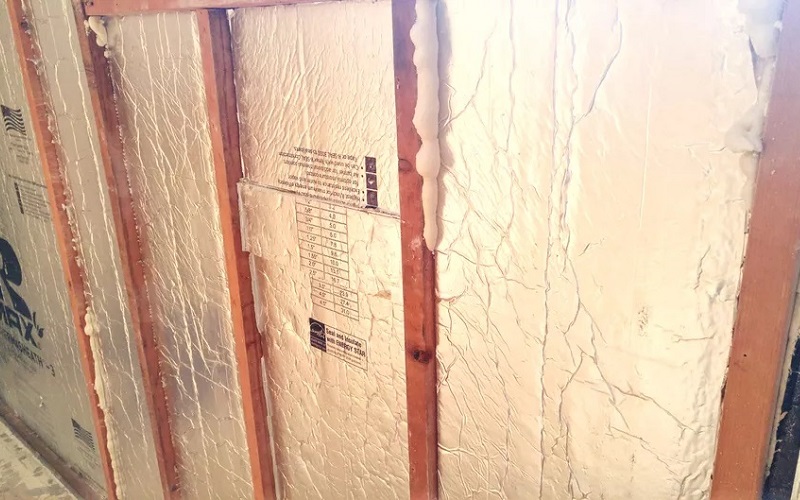
The next biggest thing to update or replace is wall insulation. Even though your RV most likely has wall insulation already, pre-installed insulation is rarely enough.
Fortunately, you can always add another layer. If you have an older RV with no wall insulation at all, installing this should be your top priority.
If you want to add another layer of RV insulation yourself, spray foam will be the best option since it is the easiest to install.
However, you may need to call a professional if you want to add more fiberglass or rigid foam layers.
One thing to note about adding new layers of wall insulation is that it may affect the RVs warranty. Make sure to check your policy before doing any major renovations.
RV Skirting Insulation
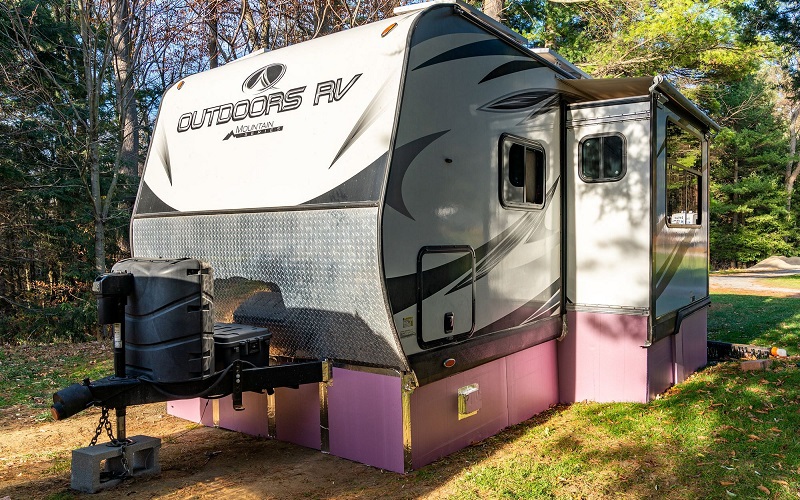
Skirting is especially important during the hot summer months. It acts as a sort of underbelly insulation – if the underbelly of your RV is exposed to the hot pavement or other outdoor elements, that heat will transfer to the interior and heat the trailer.
Skirting will help keep your RV cool in the summer months and maintain heat in the winter months.
You can usually find RV skirting for the specific make of your RV. If you can’t find any made for your trailer, you can order customizable skirts online.
Ceiling and Floor Insulation
Air can easily escape through your roof. Use a vent cover to prevent heat from escaping or entering. However, make sure to remember to remove the vent cover when cooking, especially with gas. You can also install carbon monoxide detectors.
You can also put a tarp over your trailer if you are in extreme climates. You might have to use a dehumidifier, though, if you are using this option.
Laying down rugs over uncarpeted areas will also help retain heat. Finally, consider buying some warm slippers and socks for those cold summer nights or during winter camping.
Storage Compartment Insulation
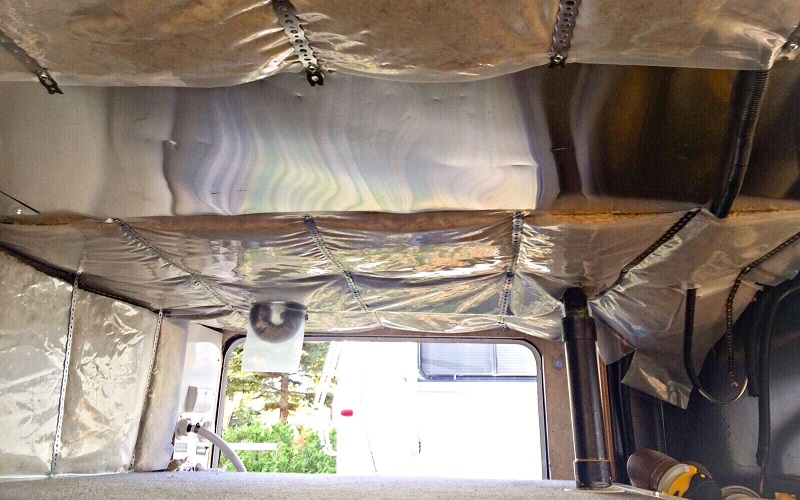
This may seem like an odd one, but it is quite common for there to be openings near storage compartments. Hot air can easily escape near these openings.
To fix this, inspect the caulking and weather stripping for any cracks. If there is damage, replace them. Make sure to check these areas at least once a year.
Water And Septic Pipe Insulation
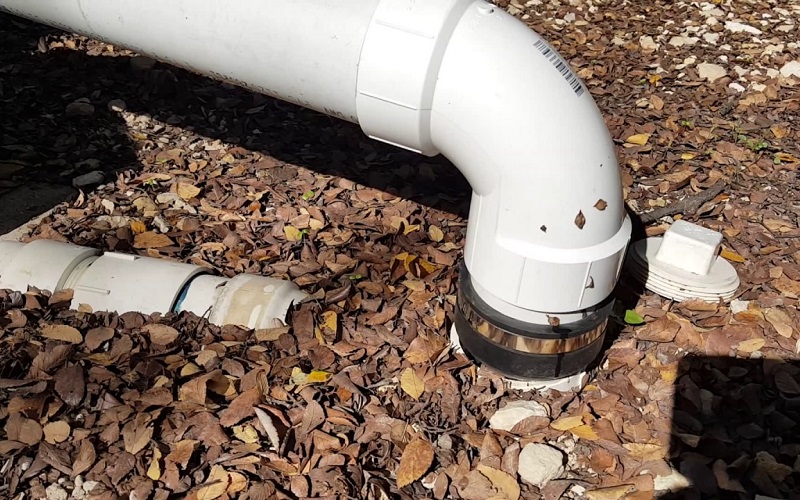
You aren’t the only one freezing in the trailer. Your water and septic pipes are also subject to the cold!
If you are taking the time out to insulate your RV, you might as well protect the pipes.
To insulate the freshwater hose, use heat tape and found foam insulation. You could also invest in a heated hose, which might be easier. Make sure to insulate where the faucet meets the RV as well.
If you are interested in reducing heat loss by up to 45%, you can even insulate your water heater.
To do this, put a board underneath the heater to prevent heat from escaping through the floor and use a water heater insulating blanket.
When it comes to septic pipes, using a PVC pipe will prevent the sewer hose from freezing. Use fiberglass and plywood to insulate your holding tank if you keep it outside.
Finally, if you have an electric propane tank, you can cover it with a propane tank blanket to prevent the tank from freezing.
Other Ways To Keep Warm
Perhaps you will only be going for a week-long trip, or you don’t want to spend loads of money on renovations. You can do a few other things to keep warm on cold summer nights or in the winter.
Use A Space Heater
When using a heater, make sure never to leave it on when you leave the trailer. You can also invest in a carbon monoxide detector to take extra caution.
Bake Something In The Oven
Baking is the oldest trick in the book to heat an area. Cook a pizza or bake some delicious chocolate cookies and enjoy the heat.
Invest In Some Warm, Insulated Blankets
There are many heavy-duty sleeping bags and electric blankets that will do the trick. You can also use a foam board and a foam topper.
Layer Your clothing
If you plan a winter camping trip, make sure to bring as many layers as you can. Even if you use some of these insulation tips, you never know what the weather will bring.
Maintain The RV Furnace
It is essential to maintain the furnace during the winter throughout the day. Try to maintain a steady temperature, especially throughout the night.
What Materials Should I Use?
Now that we know RV insulation basics, there are a few things you will need to have in your inventory.
Fiberglass
Fiberglass is one of the most common kinds of RV insulation. This insulation has a very high thermal resistance, which means it is effective at temperature regulation. Fiberglass will keep your RV at a constant temperature in all seasons.
This insulation is a favorite since it is relatively cheap and has a high thermal resistance.
Something to keep in mind about fiberglass though is that it wears out more quickly. It is also susceptible to moisture damage, so you will have to replace the fiberglass frequently.
When using fiberglass in your RV, watch out for signs of increased moisture levels such as mold or health issues such as sneezing or coughing.
Spray Foam
Spray foam is also another form of RV insulation. You can spray this product onto the walls of your RV using a spray canister. When installed correctly, the foam is very resistant to moisture and has a strong seal.
The insulation is lightweight, which saves on gas costs and is affordable. If you are a traveler who loves the beach or high-humidity areas, spray foam will be a great choice.
On the other hand, the insulation may be difficult to install if you are a newbie to spray foam.
Much like many other kinds of insulation, you need to install this properly for it to be effective. It also has a slightly lower thermal resistance than fiberglass does.
Rigid Foam
Rigid foam panels come in various thicknesses and thermal resistance values. People use these since they can always find the right kind for their travels.
Rigid foam also has high moisture resistance, so you will not have to worry about what type of climate you are traveling in.
Rigid foam is known for its long lifespan, high moisture resistance, and various thermal resistant values. Since the foam lasts a while, it is more costly than others.
One thing to keep in mind about this insulation is that it is a bit tricky to install. If you are not too familiar with the process, you might want to consider asking a professional for help.
Rigid foam comes in sheets, and then you cut them to fit your RV walls.
What Other Materials Do I Need?
Since there are so many ways to insulate an RV, you can pick and choose what technique you want to use. Here is a list of everything that we mentioned above.
- Caulking
- Weather Stripping
- Thermal curtains
- Door snake
- Plastic insulation film
- Spray foam
- Foam panels
- RV skirting
- Vent cover
- Area rugs
- Tarp
- Slippers/Socks
- Insulated blankets
- Foam board/topper
Conclusion
There are a few different ways you can insulate your RV. First of all, start with your doors and windows. Make sure the caulking and weather stripping are all intact and replace any damaged ones.
You can also buy an energy-efficient door and install a door snake.
Most RVs already have some sort of wall insulation, but you might need to add extra layers. Buy spray foam insulation if you want to DIY it, or call a professional to install fiberglass or rigid foam.
A few other things you can do are install RV skirting and buy some area rugs.
Even if you do not want to invest in some hardcore RV insulation, you can always bring extra bedding, wear lots of layers or buy a space heater.
Resources:

